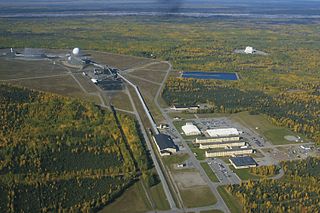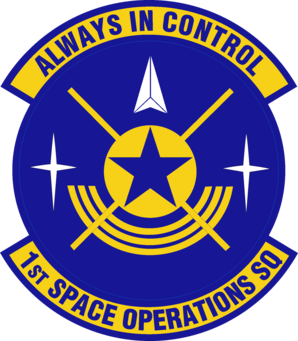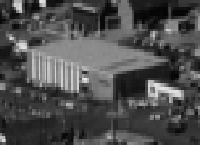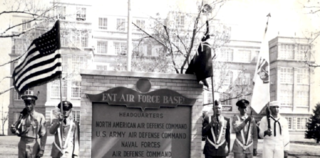Space Detection and Tracking System, or SPADATS, was built in 1960 to integrate defense systems built by different branches of the United States Armed Forces and was placed under North American Aerospace Defense Command (NORAD). The Air Force had a program called Spacetrack, which was a network of space-probing cameras and radar. The Navy had a system called SPASUR, a space surveillance system that was "an electronic fence" the protected the southern United States. [1]
The United States Armed Forces are the military forces of the United States of America. It consists of the Army, Marine Corps, Navy, Air Force, and Coast Guard. The President of the United States is the Commander-in-Chief of the Armed Forces and forms military policy with the Department of Defense (DoD) and Department of Homeland Security (DHS), both federal executive departments, acting as the principal organs by which military policy is carried out. All five armed services are among the seven uniformed services of the United States.

North American Aerospace Defense Command, known until March 1981 as the North American Air Defense Command, is a combined organization of the United States and Canada that provides aerospace warning, air sovereignty, and protection for Northern America. Headquarters for NORAD and the NORAD/United States Northern Command (USNORTHCOM) center are located at Peterson Air Force Base in El Paso County, near Colorado Springs, Colorado. The nearby Cheyenne Mountain Complex has the Alternate Command Center. The NORAD commander and deputy commander (CINCNORAD) are, respectively, a United States four-star general or equivalent and a Canadian three-star general or equivalent.

The United States Air Force (USAF) is the aerial and space warfare service branch of the United States Armed Forces. It is one of the five branches of the United States Armed Forces, and one of the seven American uniformed services. Initially formed as a part of the United States Army on 1 August 1907, the USAF was established as a separate branch of the U.S. Armed Forces on 18 September 1947 with the passing of the National Security Act of 1947. It is the youngest branch of the U.S. Armed Forces, and the fourth in order of precedence. The USAF is the largest and most technologically advanced air force in the world. The Air Force articulates its core missions as air and space superiority, global integrated intelligence, surveillance, and reconnaissance, rapid global mobility, global strike, and command and control.
SPADATS was developed by the SpaceTrack Research and Development Facility, also called the 496L System Program Office, at Hanscom Field in Bedford, Massachusetts. [2] (Bendix, Sperry Rand and Hughes competed for SPADATS contract in the early 1962 on the basis of their prior experience in phased array technology. [3] ) It first operated at the Electronic Systems Command building at Hanscom and in 1963 was transferred to the Ent Air Force Base [2] and then to the Cheyenne Mountain Complex in 1965 [4] or 1966. [5] From that point, the SpaceTrack Research and Development Facility continued to build and test new software, manage contracts for hardware and software, and operate as a backup facility. [2] SPADATS was developed in assembly language and the hardware at all three locations was Philco 2000/Model 212 large scale transistor computers. [5] Spiral Decay, a Special Perturbation Program, was used to model the motion of space objects re-entering the Earth's atmosphere. Project 437 used a second Special Perturbation Program called ESPOD. [5]

Hanscom Air Force Base (AFB) is a United States Air Force base located predominantly within Bedford, Massachusetts, with portions extending into the adjoining towns of Lincoln, Concord and Lexington. The facility is adjacent to Hanscom Field which provides general aviation and charter service.

Bedford is a town in Middlesex County, Massachusetts, United States. It is within the Greater Boston area, 15 miles (24 km) north-west of the city of Boston. The population of Bedford was 13,320 at the 2010 census.
The Bendix Corporation was an American manufacturing and engineering company which during various times in its 60-year existence (1924–1983) made automotive brake shoes and systems, vacuum tubes, aircraft brakes, aeronautical hydraulics and electric power systems, avionics, aircraft and automobile fuel control systems, radios, televisions and computers. It was also well known for the name Bendix, as used on home clothes washing machines, but never actually made these appliances.
SPADATS remained operational until about 1980 at Cheyenne Mountain. Some of its logic, though continued on in Space Defense Operations Center (SPADOC) systems. [5]

The Space Defense Center (SDC) was a space operation center of the North American Aerospace Defense Command. It was successively housed at two Colorado locations, Ent Air Force Base, followed by Cheyenne Mountain's Group III Space Defense Center The 1st Aerospace Control Squadron manned the SDC at both locations, which used the Electronic Systems Division's 496L System for processing and displaying data combined from the U.S. "Air Force's Space Track and the Navy's Spasur" (NAVSPASUR).












